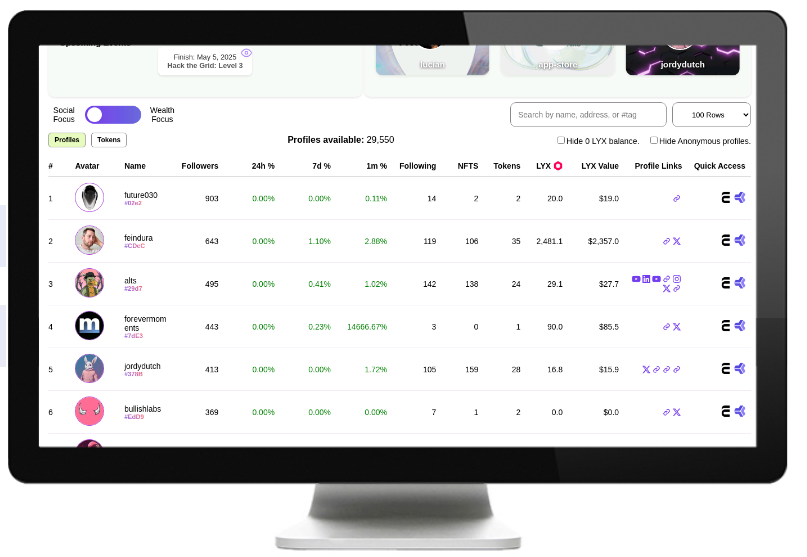For years, Web3 felt like a place where wallets ruled and identity barely existed.
Even with readable domains like ENS, most addresses remained faceless – disconnected from any meaningful social presence.
That’s starting to change.
Universal Profiles (UPs) are beginning to redefine what identity could look like on the blockchain.
With platforms like UniversalEverything and ProfileJump, Web3 is starting to feel less like a network of wallets – and more like a place where people, presence, and expression actually exist.
So… what are Universal Profiles?
Universal Profiles are smart contract-based accounts that that act as your on-chain container – holding everything that makes up your digital presence.
Think of them like your Instagram, PayPal, LinkedIn, and digital wardrobe all in one wallet – fully owned by you, fully portable, and fully decentralized.
They allow you to:
- Set a profile image
- Link social media and websites
- Collect NFTs and tokens
- Showcase who you are in a verified, persistent way
- Control your reputation across apps – without ever needing to “sign up” again
- Design your own unique digital grid – a public canvas for your on-chain life
- Enable ticket sales, grant special access, and create exclusive experiences – all directly through your on-chain profile.
- Receive tips, gifts, or fan support – directly, without intermediaries
- And eventually, represent not just yourself, but communities, agents, and DAOs
But this is only the beginning!
Universal Profiles are still evolving — and what they unlock tomorrow may be far beyond what we can imagine today.
UP’s are built on standards like ERC725Y and LSP3Metadata, developed by Fabian Vogelsteller, one of the original creators of Ethereum’s ERC20. This shift might just be a game-changer – and here’s why.
Can Web3 Start to Feel Like Web2?
Until recently, many of the activities we associate with the internet – following people, building public profiles, expressing identity, collaborating – were nearly impossible to do on-chain in a meaningful way.
Universal Profiles, along with tools like ProfileJump, are beginning to bridge that gap.
Suddenly, you can:
- Discover creators based on their actual on-chain activity
- Track influence and engagement, just like on social platforms
- Express yourself visually with verified images and metadata
- Build a reputation that travels with you – not locked into someone else’s system
With Universal Profiles, you can control your on-chain data, avoid centralized platforms profiting from your engagement, and gain more visibility without heavy reliance on algorithmic curation.
A Whole New Layer of Digital Life
ProfileJump doesn’t just make UPs visible — it turns them into a living, searchable graph of Web3 identities.
It may be the first platform that lets you:
- See which profiles are trending
- Explore follower growth and wallet value
- Understand identity beyond just ENS or address
- Filter by tags, interests, or communities

For creators, collectors, fashion innovators, DAO founders, or simply curious explorers – this opens up a whole new layer of interaction in Web3 that previously didn’t exist.
Just as NFTs unlocked new markets for art and gaming, Universal Profiles are laying the groundwork for on-chain social interaction, identity commerce, and cultural expression.
ProfileJump Is Where It Starts to Come Together
Web3 is no longer just about tokens. It’s starting to become about who you are.
And now, for the first time, you can actually show that – on-chain, transparently, and without giving up control.
Platforms like ProfileJump are not the final answer, but early signs of what might come next:
A more expressive, inclusive, and user-owned version of the web.
One where you don’t have to give up the convenience of profiles, networks, or self-expression –
but you finally get to own the experience.


